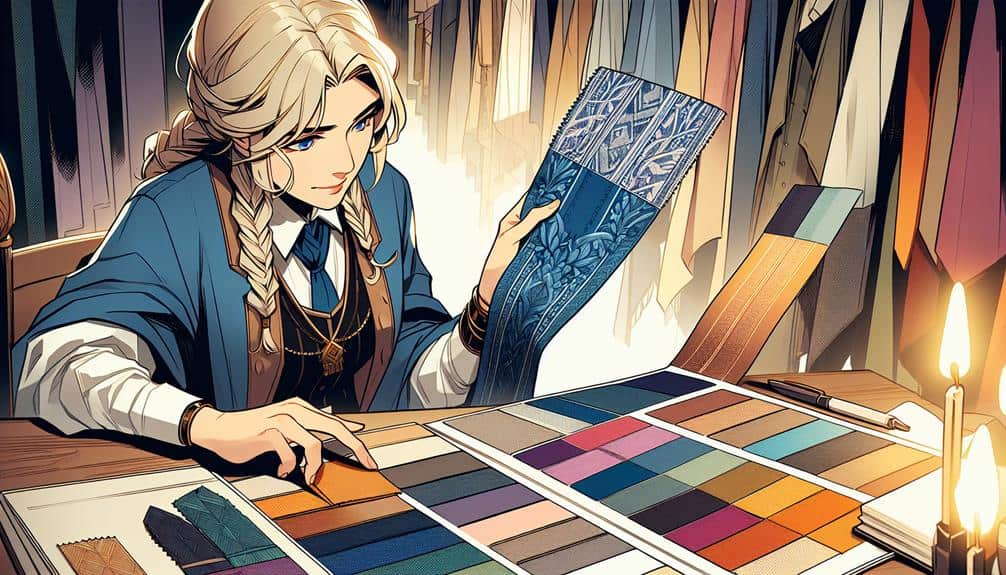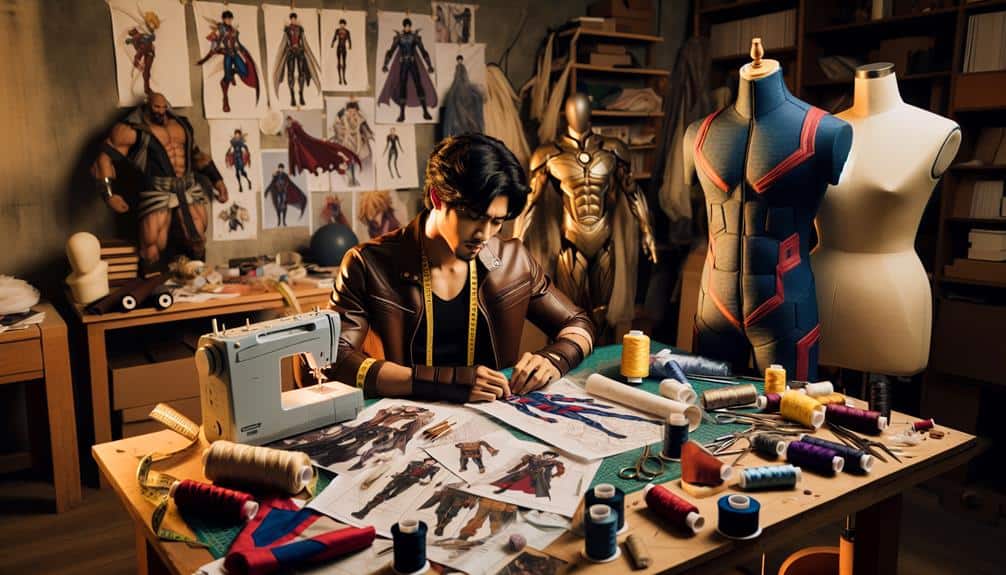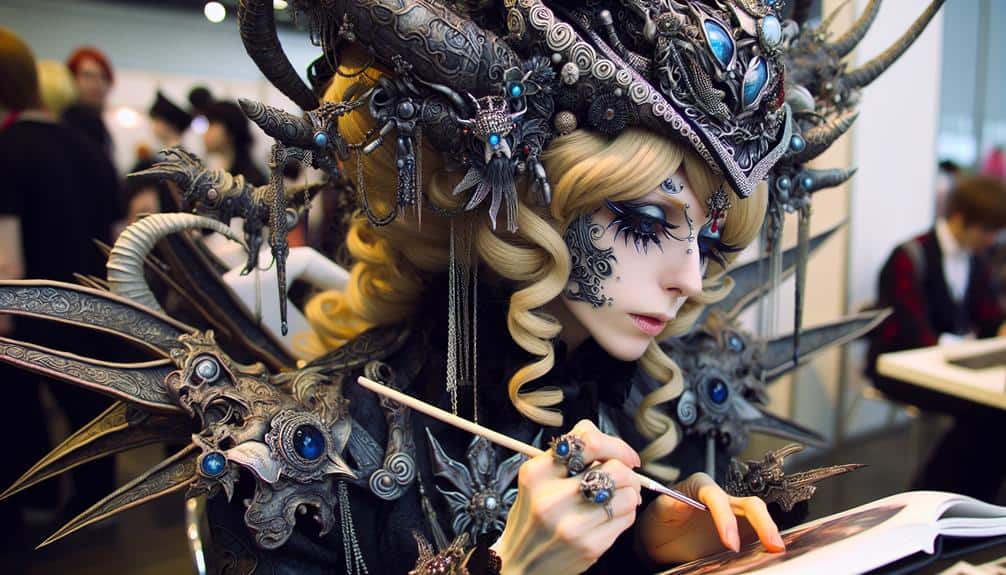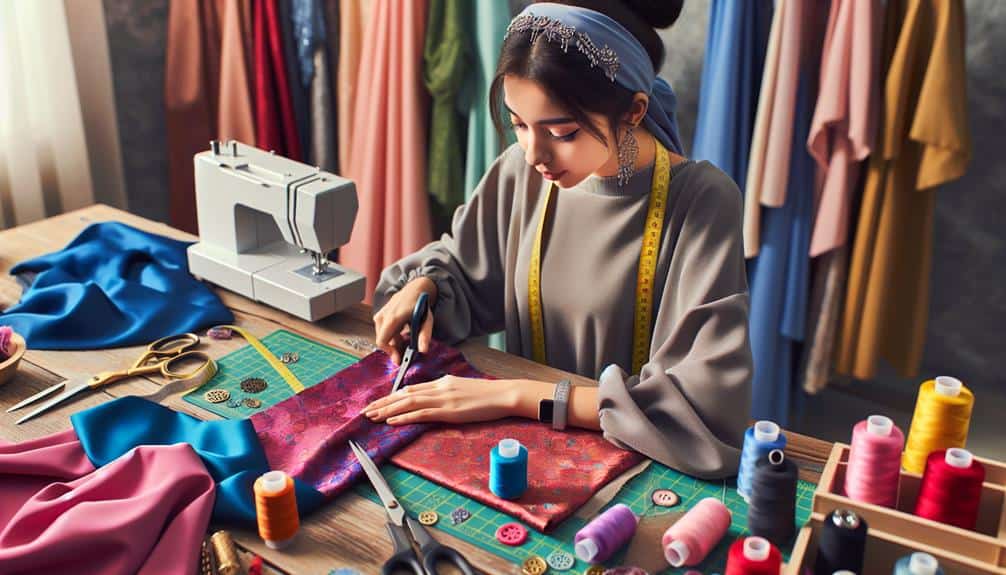When it comes to cosplay, fabrics are your artistic palette, allowing you to bring characters to life with precision. Imagine the impact of a perfectly chosen material on your overall portrayal.
But how do you guarantee accuracy? Understanding fabric properties and character aesthetics is essential. From the sheen of silk to the ruggedness of leather, each detail matters.
So, how do you navigate this intricate world of fabric selection to achieve the ultimate level of authenticity in your cosplay creations?
Key Takeaways
- Choose fabrics matching character descriptions for accurate portrayal.
- Research character wardrobe details for authenticity in cosplay.
- Consider texture, weight, and drape for faithful costume recreation.
- Source high-quality materials to enhance the authenticity and longevity of cosplays.
Importance of Fabric Choice
Choosing the right fabric is essential for achieving the utmost accuracy in your cosplay creations. Character authenticity hinges on the fabric selection; it can make or break the overall look you're trying to achieve.
To make certain your cosplay reflects the character as accurately as possible, dive into researching the fabrics mentioned in the character's description or depicted in the source material. Understanding the texture, drape, weight, and sheen of the fabric is important.
For example, a character known for their flowing cape would require a fabric with excellent drape, like chiffon or silk, to capture the essence of the character's attire. On the other hand, characters with structured outfits might demand fabrics like cotton or denim to maintain the desired silhouette.
Researching Character Wardrobe
To accurately replicate a character's attire in your cosplay, thoroughly investigating the wardrobe details of the character is fundamental. When researching character wardrobe, consider the following:
- Character Inspiration: Dig into the source material of the character you're cosplaying. Look at concept art, official illustrations, and screenshots to understand the intricate details of their clothing. Pay attention to specific colors, patterns, and accessories that define their style.
- Historical Accuracy: If the character's attire is inspired by a particular historical period, take the time to study fashion trends of that era. Understanding the historical context can help you choose fabrics that align with the time period and enhance the authenticity of your cosplay.
- Costume Evolution: Characters often undergo wardrobe changes throughout a series or franchise. Analyze how the character's clothing evolves over time to make your cosplay reflect the most recognizable or iconic version of their attire.
Texture and Drape Considerations
When analyzing texture and drape for your cosplay fabric selection, evaluate how the material's characteristics will interact with your costume design and overall portrayal of the character. Texture analysis plays a critical role in determining the authenticity of your cosplay. Look for fabrics that match the texture of the character's clothing as closely as possible. For instance, if the character wears a smooth and shiny outfit, opt for fabrics like satin or silk to replicate that appearance accurately. On the other hand, if the character's attire has a rough or textured surface, contemplate fabrics like tweed or canvas to achieve a more realistic look.
Fabric weight is another important factor to contemplate when selecting materials for your cosplay. The weight of the fabric can impact how the costume drapes and moves, ultimately influencing the overall aesthetic of your portrayal. Lighter fabrics such as chiffon or organza work well for flowing garments, while heavier fabrics like denim or wool are ideal for structured pieces that require more volume. By carefully analyzing both the texture and weight of the fabric, you can enhance the accuracy and authenticity of your cosplay portrayal.
Matching Colors and Patterns
Consider the character's color palette and distinctive patterns to guarantee your cosplay ensemble aligns accurately with the original design.
When aiming for color accuracy in your cosplay fabric selection, here are three essential tips to keep in mind:
- Color Matching: Use color swatches or a color guide to ensure the fabric matches the exact shades of the character's attire. Pay attention to undertones and variations to achieve precise color accuracy.
- Pattern Alignment: If the character's outfit features specific patterns like stripes, plaids, or intricate designs, focus on aligning these patterns correctly on your fabric. Take time to match the pattern repeats for a professional and accurate look.
- Fabric Texture: Consider how the fabric texture interacts with color and pattern. Certain fabrics may change how colors appear or affect the visibility of patterns, so choose a fabric that complements both the color accuracy and pattern matching requirements of your cosplay design.
Sourcing High-Quality Materials
Guarantee the authenticity of your cosplay by selecting high-quality materials that closely match the original design of the character. When it comes to sourcing fabrics, prioritize material durability to ensure your costume stands the test of time. Consider the activities you'll engage in while wearing the cosplay and choose fabrics that can withstand those demands. While high-quality materials may come at a higher cost initially, they often last longer, saving you money in the long run by reducing the need for frequent replacements.
Fabric sourcing is important for achieving accuracy in your cosplay. Research where you can find authentic materials that align with your budget constraints. Be mindful of the fabric's texture, weight, and drape to mimic the character's attire effectively. Look for specialty stores, online retailers, or even local fabric shops known for carrying high-quality materials.
Frequently Asked Questions
How Can I Ensure That the Fabric I Choose Is Durable Enough to Withstand Multiple Wears at Conventions?
To guarantee fabric durability for cosplay, balance cost with quality. Research reliable suppliers known for durable materials. Prioritize sturdy fabrics like twill, canvas, or polyester blends. Test wearability before events for longevity.
Are There Specific Fabric Types That Are Better Suited for Certain Types of Cosplay Costumes (E.G. Armor, Flowing Dresses, Etc.)?
Aiming for accuracy in your cosplay? Choosing appropriate fabrics is key. Consider the costume's structure and textures. For armor, opt for sturdy materials like EVA foam. Flowing dresses demand lightweight, flowing fabrics for authenticity.
What Are Some Tips for Handling and Sewing Difficult Fabrics That Are Commonly Used in Cosplay?
When handling and sewing tricky fabrics for cosplay, remember fabric care is key. Steam out wrinkles gently before starting. Use precise sewing techniques like hemming for a polished look. Practice makes perfect in mastering these skills.
How Can I Accurately Replicate Intricate Patterns or Designs on Fabrics for Cosplay Costumes?
To accurately replicate intricate designs on fabrics for cosplay costumes, consider fabric printing for complex patterns. Opt for custom dyeing to match colors precisely. Attention to detail is key in achieving authenticity and bringing characters to life.
Are There Any Eco-Friendly or Sustainable Fabric Options That Can Be Used for Cosplay Costumes?
For sustainable options in cosplay, consider eco-friendly choices like organic cotton, bamboo fabric, or Tencel. These fabrics offer quality while being environmentally conscious. Enhance your cosplay accuracy with these sustainable materials that align with your values.



